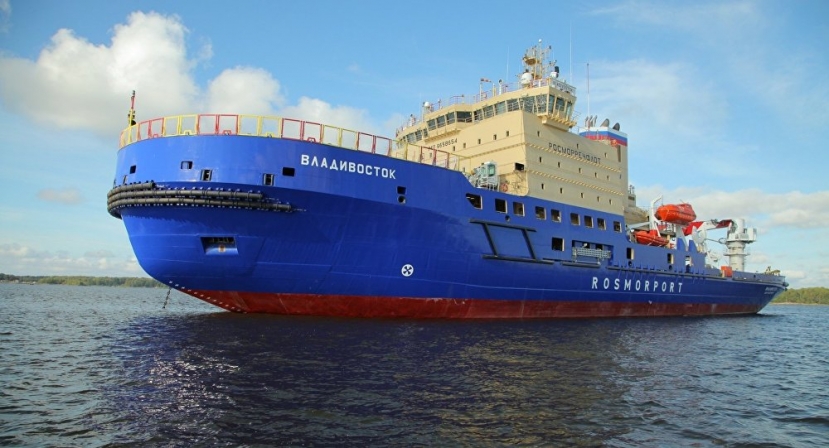Meet the Vladivostok, the World's Most Powerful Non-Nuclear Icebreaker
12.12.2016 19:00
 Meet the Vladivostok, the World's Most Powerful Non-Nuclear Icebreaker
Meet the Vladivostok, the World's Most Powerful Non-Nuclear Icebreaker
Built at the Vyborg Shipyard and sailing the waterways of the Baltic and Arctic seas under a Russian flag, the Vladivostok is the most powerful non-nuclear icebreaker in Russia and probably even in the entire world.
Commissioned by the Federal Marine and River Transport Agency, the icebreaker started guiding ships along the frozen waters of Russia’s northern reaches in February 2016.
The Project 21900 M icebreakers, of which the Vladivostok is the lead ship, can plough through ice up to 1.5 meters thick; they are designed for many purposes in icy waters such as escorting large-capacity ships, towing, firefighting on ships and offshore facilities, fast response to distress calls and cargo transportation.
Dmitry Zakharov, chief press service expert of the United Shipbuilding Corporation (USC) which owns Vyborg Shipyard, told Sputnik that the Vladivostok is the most powerful diesel-electric icebreaker in the world.
"The distinct characteristics of the Project 21900 M ships that set them apart from other diesel-electric icebreakers are maximum automation of all processes, unlimited area of operation and the ability to wade through ice up to 1.5 meters thick. It was also designed to be as comfortable as possible for the people onboard, with spacey crew quarters, separate toilet rooms and high-quality interior design. There has never been a ship in Russia that could rival the Vladivostok in terms of creature comforts," he said.
He also added that Russia’s ongoing drive into the Arctic region has revitalized the shipbuilding industry
"You could say that the fleet’s renewal was triggered by the Northeast Passage’s growing role as the shortest shipping lane between Europe and Asia; the USC is currently building three new 60 MW icebreakers for this particular area. Another catalyst is the offshore projects (in the Arctic), with three new vessels being constructed at the USC Arctech Helsinki Shipyard for that purpose. The third catalyst is the need to increase the military presence in the region; shipyards of the Northwest are expected to build an entire fleet of specialized patrol ships to facilitate this task," Zakharov explained.
All in all, he surmised, the USC is able to timely react to the needs of both the government and private companies, building icebreakers, service ships and offshore equipment to suit their needs. And it is clear that Arctic offers some really good prospects to Russian shipbuilders and Russia as a whole.
